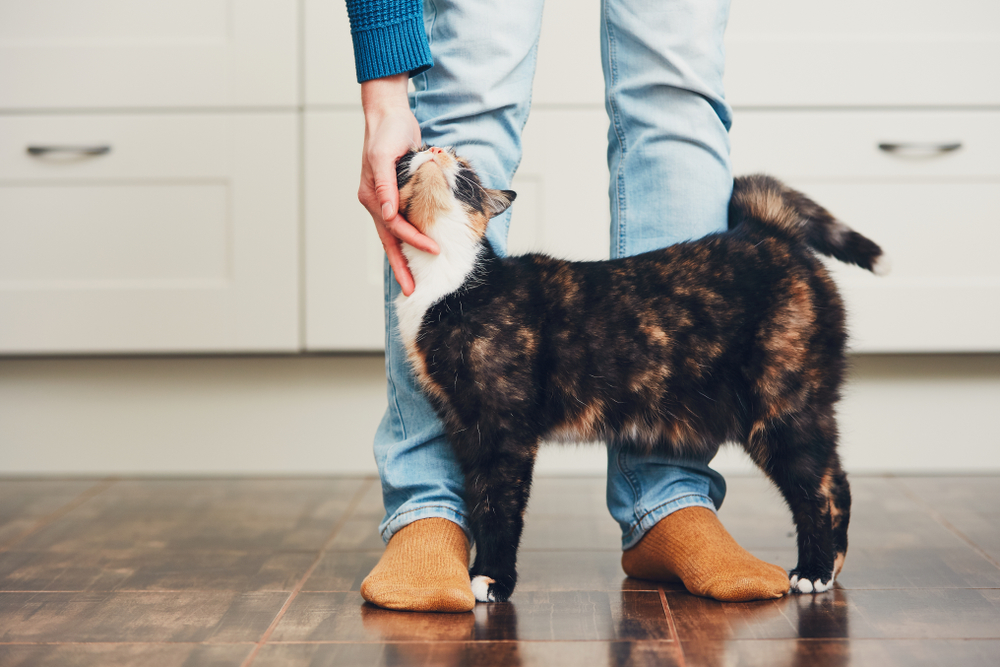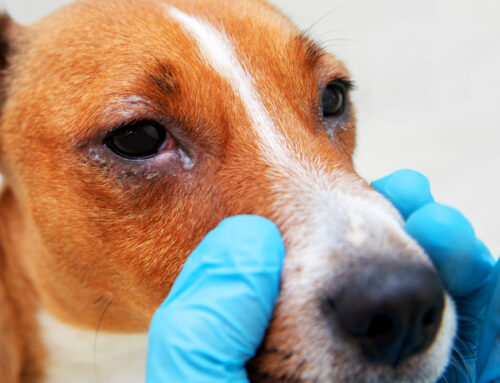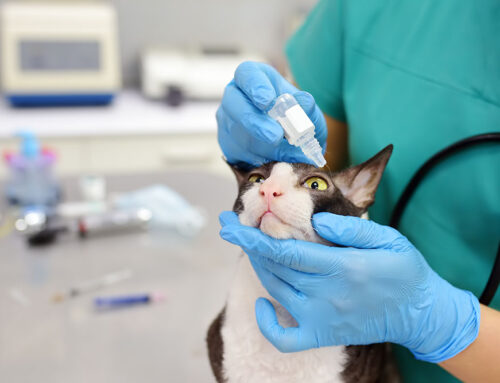Many eye diseases and injuries can potentially impact your pet’s vision and lead to complete sudden or gradual vision loss. Although blindness can significantly challenge dogs and cats, most need only a short adjustment period to live fulfilling, happy lives similar to their sighted counterparts. Without vision, your pet’s other senses kick into overdrive, and they learn to navigate and interact with their world in new ways—with help from their human family members. The Veterinary Vision Center team shares their top tips for providing blind pets the extra loving care they need.
#1: Ensure you control your pet’s potential eye pain
Blindness can be a painless or painful process, depending on the underlying cause, and ensuring your pet’s pain is well-controlled through medical management or surgical procedures is crucial to their overall wellbeing and quality of life. Always follow our team’s recommendations regarding your pet’s long-term eye care. Examples of painful, potentially blinding eye conditions, include glaucoma or eye trauma.
#2: Minimize pet obstacles and avoid moving furniture
Minimize your pet’s chances of colliding with or knocking down furniture and other objects as they learn to navigate by keeping floors clutter-free and getting rid of unnecessary decor items. Over time, they will map out your home, so you should avoid confusion and not move major items.
#3: Train your pet to recognize textures and other landmarks
You can help your pet learn to navigate new areas quickly with landmarks that signify different floor textures. For example, place a specific kind of rug or rubber mat at the base or top of stairs or in doorways, and then use those mats later to help pets learn new spaces. If you move frequently or travel with your pet, the mats can help them quickly adjust.
#4: Use baby gates during the initial adjustment period
Baby gates are helpful during the initial adjustment period, when stairs and specific areas may be dangerous. Use gates to keep your pet in safe, single-level house areas until you have taught them to use stairs safely. If you have an older pet who regularly struggles with stairs or gets lost easily in the house, consider keeping the gates up permanently. Carpeting the stairs may also be a helpful safety measure.
#5: Guide and reassure your pet, but don’t hover
Pets who slowly lose vision typically adapt to their vision loss as it occurs. Sudden vision loss can be more difficult for pets and cause anxiety, and they may be overly cautious or clingy. Encourage pets to move around and help them map out your home by walking with them on or off a leash. Be supportive, but avoid guiding your pet too strongly or picking them up and moving them around, which can worsen their disorientation.
#6: Stick to familiar walking routes
You can still take dogs who want or need high activity for walks or runs by sticking to the same walking route, which will help your pet learn and avoid obstacles. Don’t worry about boredom—the smells along an outdoor route will constantly change, keeping your dog interested.
#7: Outfit your pet with blind pet gear
Special gear for blind pets can serve several different purposes. First, collars and harnesses labeled “blind pet” alert others to your pet’s condition, so they will avoid startling them or let other pets approach unexpectedly. Second, harnesses and head collars can help you steer pets and prevent accidents. Third, halo-style harnesses with a built-in bumper bar can help smaller pets navigate without bumping objects with their faces or eyes, protecting them from injury.
#8: Avoid startling a blind pet

Startling any pet is never a good idea, but you can more easily accidentally sneak up on and scare blind pets. Always talk to your pet or make a noise nearby when you approach, to alert them to your presence. If you need to rouse a sleeping blind pet, stomp on the ground or speak to them loudly. Ensure children understand that blind pets cannot see them and teach them to interact safely.
Our four-legged friends are capable of remarkable adaptation, and they do not need to be held back because of their blindness. Pets with blinding eye conditions should continue visiting our Veterinary Vision Center team annually, or more frequently, as recommended by the ophthalmology team. Contact us to schedule your pet’s next visit or to learn more about caring for blind pets. Blind-pet owners can also visit the American College of Veterinary Ophthalmologists (ACVO) website for additional resources and information.







Leave A Comment